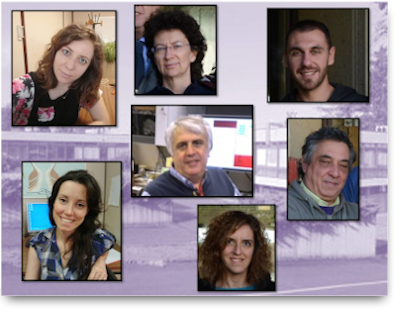
Paola Bolognesi -
Anna Rita Casavola-
Mattea Carmen Castrovilli -
Laura Carlini -
Jacopo Chiarinelli -
Andrea Morabito -
Lorenzo Avaldi -
Antonella Cartoni (UniSapienza) - Associato ISM
Research Activity
The Molecular Dynamics and Applications group, MDA, carries out research activities in different fields ranging from basic physical-chemistry reactions, with the study of the interaction between ionizing radiation and molecules of bio-medical interest, to more purely application sectors, with production of thin films of bioactive molecules. The main lines of research are briefly described below..
Chemical-physical characterization of systems with increasing complexity and dynamic of their processes
In this activity the radiation-matter interaction (synchrotron radiation, ultrafast FEL or HHG radiation, electrons and multiply charged ions) is used to study both the structure and the dynamics induced by the interaction in systems of increasing complexity, from isolated molecules to nanoclusters.
Multi-electron processes dominated by electronic correlations, collective excitation processes, ultra-fast charge transfer or isomerization processes, dichroic and coherent phenomena are studied using original instrumentation and innovative methodologies that involve the time-resolved measurement of the products of interaction.
Biomolecules and their applications in radiotherapy
The first phase of radiation damage, called the physical stage, involves the interaction of ionizing radiation with the elemental components of biological systems. The activity is aimed at understanding this first phase of interaction by studying the dynamics that occur in the molecules constituents of radio-sensitizers drugs, and in some cases the drugs themselves.
The effect of the environment which surrounds these molecules, is simulated by producing homogeneous or hydrated clusters of these molecules. Their structural properties and the reactivity of the ions produced by radiation are studied by DFT methods.
Mass spectrometry and depositions of molecules for biosensor applications
Mass spectrometry is a powerful analytical tool and it is ideal for the preparation of molecules in a well-defined charge and composition state. This technology is used in our laboratories to determine the structure of gas phase molecules and study radiation-induced fragmentation patterns via the detection and analysis of their fragmentation products.
It can be used for samples that can be brought into the gas phase from solid/liquid phase by thermal evaporation. The gas phase study of molecules with increasing complexity is instead carried out via ElectroSpray Ionization (ESI) source used for diagnostic studies, excitation/ionization experiments or controlled deposition. The same technique is used under standard conditions for the deposition of thin films of bioactive molecules, on different surfaces such as screen-printed electrodes for the production of biosensors.
The experimental study is flanked by a theoretical approach based on classical molecular dynamics, which allows information on the structural and dynamic properties of the biomolecules analyzed.
Ion optics simulation of an ion beam set-up coupled to an electrospray ionisation source, strengths and limitations
Review Scientific Instruments 2020 (submitted)
Instrumentation
Collaborations
- Politecnico di Milano Physics department, as part of the PRIN project "Predicting and controlling the fate of bio-molecules driven by extreme-ultraviolet radiation". Collaborators: Mauro Nisoli, Rocio Borrego Varillas.
- Sapienza University, as part of the study of the interaction dynamics between radical ions and molecules in the upper atmosphere. Collaborators: Antonella Cartoni
- Universidad Autonoma de Madrid, in the context of the theoretical simulation of the molecules fragmentation (COST XLIC and COST MD-Gas Projects) Collaborators: Manuel Alcami, Fernando Martin, Sergio Tendero Diaz, Dario Barreiro Lage
- CNRS- CIMAP, as part of the study of interactions between multiple-charged ion beams and radio-sensitizing molecules. Collaborators: Alicja Domaracka
- Université Caen Normandie e GANIL/ Collaborators: Patrick Rousseau
- Elettra Sincrotrone Trieste in the field of radiation-matter iteration studies with synchrotron radiation and free electron laser. Collaborators: Kevin Prince, Robert Richter, Oksana Plekan, Carlo Callegari
- Soleil Source Optimisée de Lumière d'Énergie Intermédiaire de LURE, as part of the study of ionizing radiation interactions and homogeneous and hydrated clusters of radiosensitizing molecules. Collaborators: Aleksandar Milosavljevic
- Stockholm University, Dept. Physics as part of the MAECI and COST projects. Collaborators: Henning Zettergren, Mark Stocket, Henning Schmidt, Eric Cederquist)
- Institute of Physics , University of Belgrade
- Institute of Physics , Universitè de Lorraine, in the context of the study of the double photoionization of molecules and electronic correlations. Collaborators: Ugo Ancarani
- University of Tuscia (Viterbo) as part of molecular dynamics simulations of complex biomolecules in interaction with solvents and substrates. Collaborator: Stefano Borocci
- CNR- Institute of Crystallography, as part of the production and characterization of biosensors. Collaborators: V. Scognamiglio, A. Antonacci
- CNR-Institute for the Study of Nanostructured Materials Mauro Satta, Pietro Calandra
- Biosensor Snc .T. Giardi
- Microsis Collaborator: R. Antoniucci
- Swiburne University of Technology (Melbourne, Australia) as part of the interpretation of valence and core photoemission spectra of molecules of biological interest


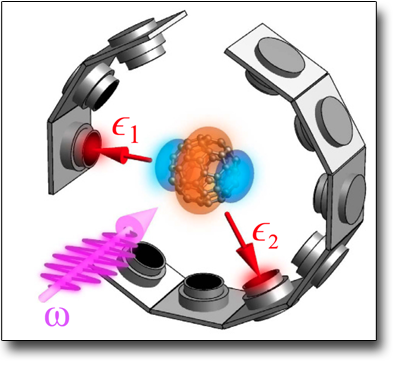
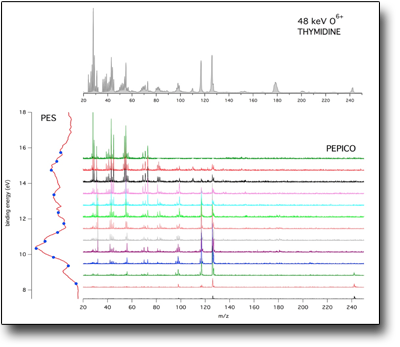
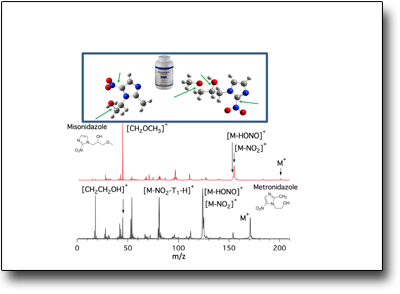
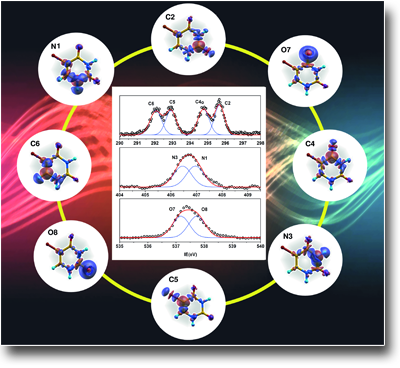
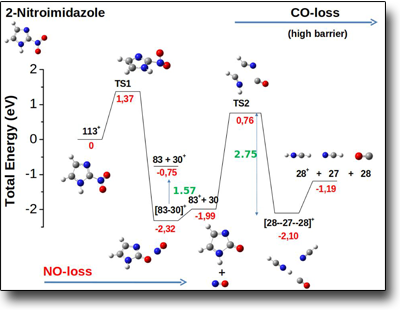
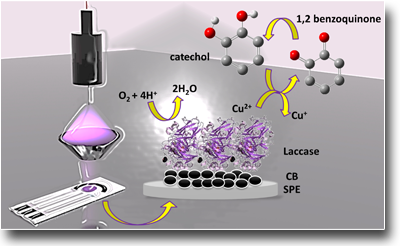
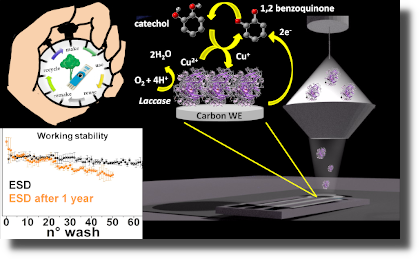
 Noemi Colozza was awarded with a two-year grant from the Umberto Veronesi Foundation aimed at developing a point-of-care sensor for
Noemi Colozza was awarded with a two-year grant from the Umberto Veronesi Foundation aimed at developing a point-of-care sensor for ESILARANTE is a project financed by the MUR as part of the PRIN 2022 call and aims to characterize and
ESILARANTE is a project financed by the MUR as part of the PRIN 2022 call and aims to characterize and Understanding how a specific molecule performs during complex biological processes is a challenge in biomedical research, despite extensive biotechnological advances
Understanding how a specific molecule performs during complex biological processes is a challenge in biomedical research, despite extensive biotechnological advances The CNR-ISM together with other Institutes such as ISMN, IGAG and IMAA and with the participation of Sapienza University of
The CNR-ISM together with other Institutes such as ISMN, IGAG and IMAA and with the participation of Sapienza University of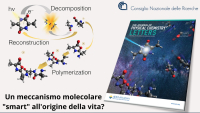 An experimental and theoretical study, cover article of the J. Phys. Chem. Lett. which has involved researchers from the Institute
An experimental and theoretical study, cover article of the J. Phys. Chem. Lett. which has involved researchers from the Institute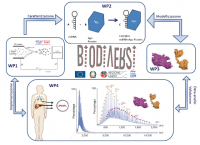 BioDivErSI is a project funded under the Public Call "Gruppi di Ricerca 2020" POR FESR Lazio 2014-2020 The project will
BioDivErSI is a project funded under the Public Call "Gruppi di Ricerca 2020" POR FESR Lazio 2014-2020 The project will The #E-CROME project, for #telemedicine to assist cancer and terminal patients, is launched.The project, funded by Regione Lazio, Lazio Innova,
The #E-CROME project, for #telemedicine to assist cancer and terminal patients, is launched.The project, funded by Regione Lazio, Lazio Innova,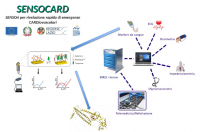 SENSOCARD aims to the optimization and field demonstration of an integrated prototype for the diagnosis of cardiovascular emergencies. The prototype
SENSOCARD aims to the optimization and field demonstration of an integrated prototype for the diagnosis of cardiovascular emergencies. The prototype English (UK)
English (UK)  Italiano (Italia)
Italiano (Italia)